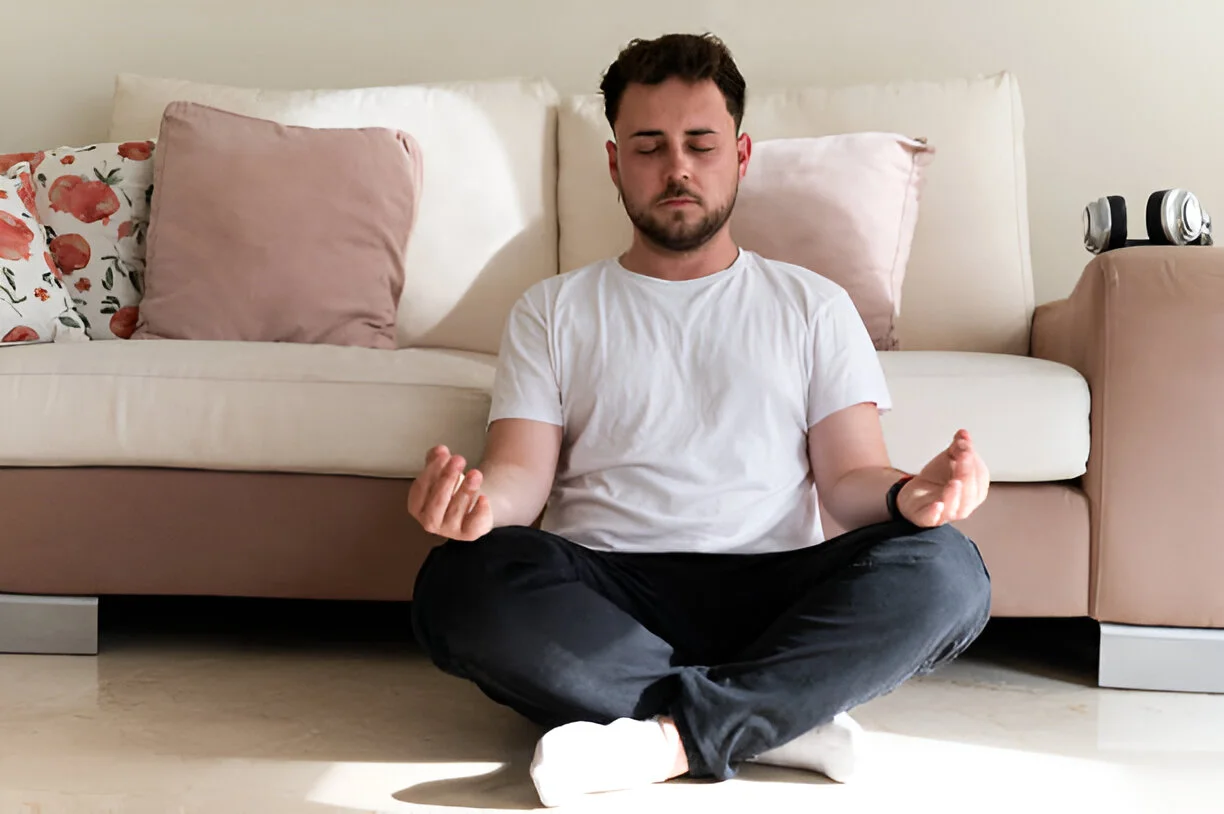Anxiety can feel overwhelming, like a constant mental noise you can’t turn down. Whether it’s a racing heart, spiraling thoughts, or the inability to focus, anxiety has a way of taking over your life. And while therapy and medication can help, more people are turning to meditation as a natural, empowering tool to manage anxiety and boost emotional wellness.
But how exactly does meditation improve anxiety? And what types of meditation are best suited for calming the mind and soothing the soul? This article explores the science, techniques, and benefits of meditation to help you take control of your mental and emotional well-being.
Understanding Anxiety: What You’re Up Against
Anxiety is more than occasional worry. It’s a persistent feeling of unease that can interfere with daily tasks, relationships, and overall health. Common symptoms include:
-
Constant overthinking or racing thoughts
-
Restlessness or irritability
-
Muscle tension or headaches
-
Trouble sleeping
-
Panic attacks or chest tightness
These symptoms stem from a hyperactive nervous system, where your brain perceives threats—even when none exist. This is where meditation comes in.
Why Meditation Helps with Anxiety
Meditation isn’t just about “clearing your mind.” It’s a powerful mind-body practice that helps retrain the brain’s response to stress. Here’s how it works:
🔬 Scientifically-Proven Benefits:
-
Lowers cortisol levels (your body’s main stress hormone)
-
Activates the parasympathetic nervous system, responsible for calm and relaxation
-
Improves focus and emotional regulation
-
Increases gray matter in areas of the brain associated with self-awareness and empathy
-
Reduces activity in the amygdala, the brain’s fear center
In short, regular meditation can rewire your brain to respond to stress in a healthier, more balanced way.
Best Meditation Techniques to Reduce Anxiety
Let’s dive into effective meditation practices specifically geared toward managing anxiety and improving emotional wellness.
1. Mindfulness Meditation
Goal: Stay present and observe your thoughts without judgment.
Mindfulness is the most well-researched form of meditation. It involves focusing your attention on the present moment—your breath, body, or surroundings—and simply noticing your thoughts as they come and go.
How to Practice:
-
Sit in a comfortable, upright position.
-
Close your eyes and bring your attention to your breath.
-
Inhale slowly through your nose, exhale through your mouth.
-
When your mind wanders (and it will), gently return your focus to the breath.
-
Practice for 5–10 minutes daily and gradually increase over time.
Why it helps:
It trains your brain to stop living in fear of the future or regret of the past, common patterns in anxiety.
2. Body Scan Meditation
Goal: Reduce physical tension and reconnect with your body.
This technique brings awareness to different parts of your body, helping you recognize and release built-up tension that often accompanies anxiety.
How to Practice:
-
Lie down or sit comfortably.
-
Close your eyes and start by focusing on your toes.
-
Slowly move your attention upward, part by part—legs, abdomen, chest, shoulders, head.
-
Notice sensations like tightness, warmth, or discomfort.
-
Breathe into each area and allow it to relax.
Why it helps:
Anxiety often lives in the body. Body scans bring calm awareness and foster physical and mental release.
3. Loving-Kindness Meditation (Metta)
Goal: Replace fear and negativity with compassion and emotional warmth.
Loving-kindness meditation cultivates positive feelings toward yourself and others. It can be especially powerful for individuals who struggle with self-criticism or social anxiety.
How to Practice:
-
Sit comfortably and breathe naturally.
-
Silently repeat phrases like:
-
“May I be happy.”
-
“May I be safe?”
-
“May I be free from anxiety.”
-
-
Gradually extend these wishes to others—friends, loved ones, even people you’re in conflict with.
Why it helps:
This form of meditation reduces emotional reactivity and increases feelings of connectedness and self-compassion.
4. Breath Awareness / Deep Breathing Meditation
Goal: Regulate your nervous system in real time.
Focusing on your breath is a powerful way to ground yourself during anxious moments.
How to Practice:
-
Try the 4-7-8 breathing technique:
-
Inhale through your nose for 4 seconds.
-
Hold your breath for 7 seconds.
-
Exhale slowly through your mouth for 8 seconds.
-
Repeat for a few cycles or until you feel more centered.
Why it helps:
Deep breathing signals your body that it’s safe, calming the fight-or-flight response.
5. Guided Meditation
Goal: Follow audio guidance for structure and support.
If you’re new to meditation or find it hard to sit in silence, guided meditation can help. Apps like Headspace, Calm, and Insight Timer offer anxiety-specific meditations with voiceovers to lead you through each step.
Why it helps:
The voice guidance can be reassuring and easier to follow, especially during heightened anxiety episodes.
How to Make Meditation a Habit
Creating a sustainable meditation routine doesn’t mean sitting for an hour every day. Small, consistent efforts matter more than occasional long sessions.
🧘♀️ Tips for Building Your Practice:
-
Start with 2–5 minutes a day.
-
Pick a consistent time (e.g., after waking up or before bed).
-
Create a calming environment: quiet room, soft lighting, minimal distractions.
-
Track your mood before and after meditation.
-
Don’t expect perfection—just progress.
Real-Life Example: Sarah’s Story
Sarah, a 22-year-old university student, struggled with anxiety during exams. Panic attacks, sleepless nights, and self-doubt became her norm. After trying a 10-minute mindfulness meditation each morning and a short body scan before bed, she noticed a dramatic shift. Her anxiety didn’t disappear overnight, but she felt more in control—and her grades improved too.
Moral of the story? You don’t have to be a monk to benefit from meditation.
Final Thoughts: Meditation is a Lifeline for the Anxious Mind
If anxiety has been stealing your peace, meditation may be the anchor you didn’t know you needed. These simple, accessible practices can train your brain to handle stress more calmly and build emotional resilience that lasts a lifetime.
It won’t fix everything overnight, but with time, meditation becomes more than a tool—it becomes a lifestyle. One that supports your mental health, relationships, and sense of inner peace.



